Specialized's Epic World Cup cross-country mountain bike features a hardtail-esque silhouette many will liken to the Trek Supercaliber. Both bikes integrate a custom rear shock into the underside of the top tube.
Specialized has worked with RockShox on the development of a unique SID Deluxe WCID shock, giving 75mm of travel.
The shock provides control over the positive and negative air springs, and is designed to run between 0 and 10 per cent sag. This, the brand says, gives it similar travel to a 100mm full-suspension bike running with typical levels of sag, while benefiting from the 'snap' of a hardtail.
It means the departure of the Brain from the frameset, which was Specialized’s adjustable inertia valve system that firmed up the rear shock, while enabling it to break free on impacts.
With the intention of killing off hardtail mountain bikes from cross-country racing, the introduction of the Epic World Cup means Specialized will no longer produce an Epic Hardtail above the Comp level.
Specialized has given the Epic World Cup a more aggressive geometry, but has gone against the grain by providing its 9.6kg race-bred cross-country bike with only 75mm of rear travel. So, can it keep up with the 120mm bike in the field?
Well, on the XC course, the Epic World Cup impresses with scalpel-sharp reactions to power, exceptional climbing capabilities and descending skills that don’t disappoint – so long as you’re forgiving of the bike’s suspension system.
However, it’s a specialist bike that suits a narrow slither of mountain biking – namely short-course XC racing – which compromises versatility.
Specialized S-Works Epic World Cup frame and suspension

The Epic World Cup exists in Specialized’s three highest spec levels – S-Works, Pro and Expert.
I tested the flagship S-Works model with the higher-modulus FACT 12m carbon frame. Specialized say this frame weighs 1,756 grams for a size medium, including the shock and hardware.
That’s a claimed 110g lighter than the Pro frameset, which uses FACT 11m carbon.
The Large I tested weighed in at 9.62kg. For reference, that's exactly the same weight (on our workshop scales) as Trek's Supercaliber SLR in Medium (review coming soon), around 600g lighter than a similarly specced Cervélo ZFS-5 with 100mm of travel and 1.5kg lighter than a 115mm (120mm fork) Pivot Mach 4 SL.
It uses a single-pivot flex-stay suspension arrangement, with a small, hidden link driving the shock.
Specialized S-Works Epic World Cup geometry

The bike's geometry is adapted to ever-more technical cross-country courses. The head angle is one degree slacker at 66.5 degrees than the regular full-suspension Epic.
Seat tube angles have also got slacker, from 75.8 degrees to 74.5 degrees. However, the bike is designed to run with minimal sag, and so the dynamic geometry (when the bike is weighted) should be closer to the geometry chart than a regulaar full-suspension bike.
| S | M | L | XL | |
|---|---|---|---|---|
| Stack (mm) | 600 | 600 | 614 | 628 |
| Reach (mm) | 415 | 440 | 465 | 490 |
| Head tube length (mm) | 93 | 95 | 110 | 125 |
| Head tube angle (degrees) | 66.5 | 66.5 | 66.5 | 66.5 |
| Bottom bracket height (mm) | 313 | 313 | 313 | 313 |
| Bottom bracket drop (mm) | 58 | 57 | 57 | 57 |
| Trail (mm) | 113 | 113 | 113 | 113 |
| Fork length (mm) | 516 | 516 | 516 | 516 |
| Fork offset (mm) | 44 | 44 | 44 | 44 |
| Front center (mm) | 701 | 726 | 757 | 788 |
| Chainstay length (mm) | 430 | 430 | 430 | 430 |
| Wheelbase (mm) | 1,124 | 1,150 | 1,181 | 1,212 |
| Standover height (mm) | 761 | 764 | 774 | 786 |
| Seat tube length (mm) | 395 | 410 | 450 | 500 |
| Seat tube angle (degrees) | 74.5 | 74.5 | 74.5 | 74.5 |
A no-Brainer
Where some brands have increased rear suspension on their cross-country bikes, the Epic World Cup has gone the other way, decreasing from 100mm to 75mm.
The RockShox SIDLuxe WCID (World Cup Intergraded Design) shock has been developed in a partnership between Specialized and RockShox, seeing a move away from Specialized’s Brain suspension system.
The shock can be set up in three modes, which the brand calls ‘Gulp’ settings. This refers to how much air is in the negative chamber, which controls how much force is required to initiate the travel.

Specialized claims the No Gulp mode, where there’s zero sag in the shock, gives the bike a real hardtail-like feel under power, with snappy reactions to rider inputs.
Add in some sag, via the Half Gulp and Full Gulp modes (5 per cent and 10 per cent respectively) and the brand claims the bike becomes a “chunk squashing ripper”.
These settings can only be changed off the bike and require a shock pump to put air into the positive chamber, which can then be leaked into the negative chamber using the release button on the air can.
Specialized says custom flanged jounce bumpers, which are rubber bottom-out bumpers placed at the end of the shock damper, provide an aggressive hook at the end of the stroke to manage bottom-out on big impacts.
For more information on the Gulp settings, read our news article on the Specialized Epic World Cup.
Specialized S-Works Epic World Cup specifications
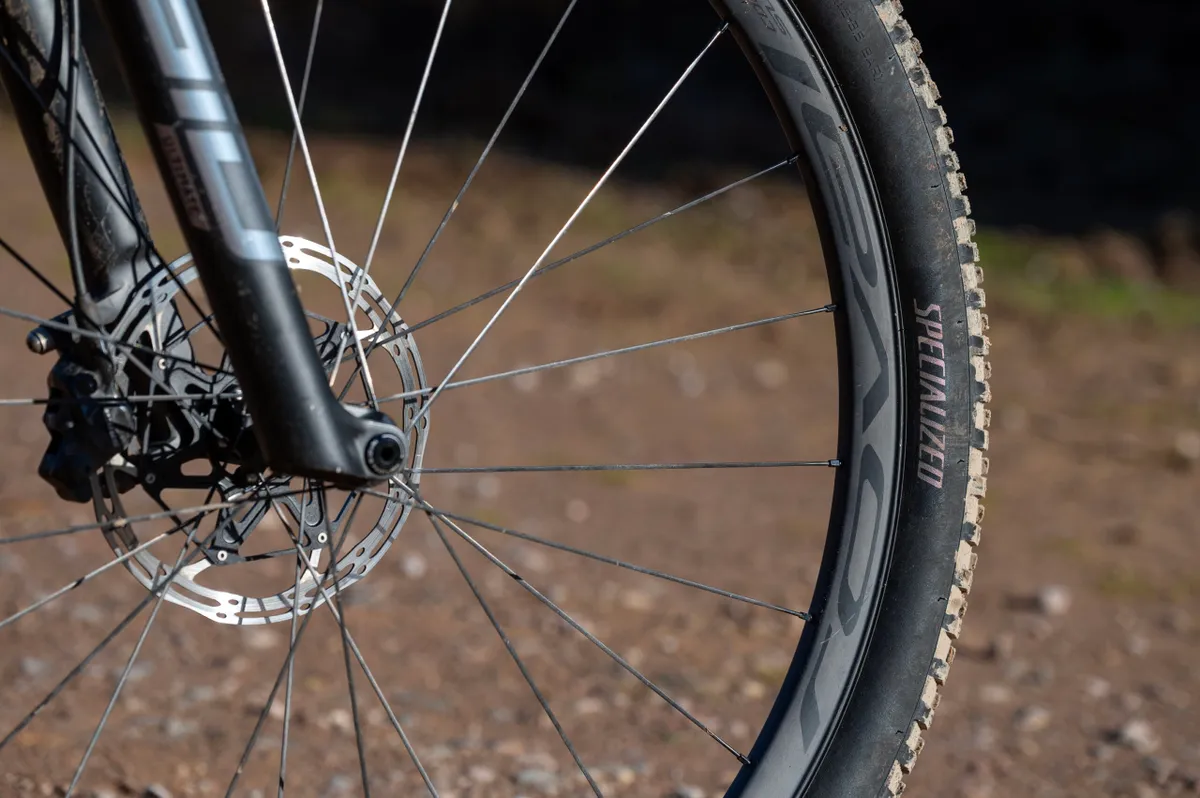
This flagship Epic World Cup features Specialized’s own carbon Roval Control SL wheelset, which has a 29mm-wide internal profile and a claimed weight of 1,240g.
The wheels are booted with Specialized’s 2.35in Renegade Control T5 tyre at the rear and a 2.35in Fast Trak S-Works T5/T7 up-front.
RockShox provides the suspension, in the form of a RockShox SID WCID rear shock and a 110mm SID SL Ultimate Brain front fork.
The fork uses an updated Brain damper and features a CNC’d crown for weight savings, giving it an almost skeletal look.
Neither the fork nor shock rely on a remote lockout to firm them up. The shock has been designed to be super-stable under power and the fork’s damper self-locks on smoother terrain (its threshold for locking is user-adjustable).

SRAM’s XX SL Eagle T-Type AXS drivetrain features alongside the new Level Stealth brakes, which run the cables of the brakes closer to the handlebar.
Specialized has opted for the less powerful 2-piston variant of the Level Stealth, despite SRAM tech documents showing it’s 9g heavier than the more powerful 4-piston option.
The drivetrain comes with a 34t Quark power meter chainring – a nice addition to the spec for those dedicated to racing.
Specialized’s new Roval Control SL Cockpit integrates the bar and stem. The bar features a bolt for a computer mount, and is 780mm wide with a theoretical 70mm stem, and a back sweep of 8 degrees.
Being fixed, there’s no bar-roll adjustability.
Specialized S-Works Epic World Cup ride impressions
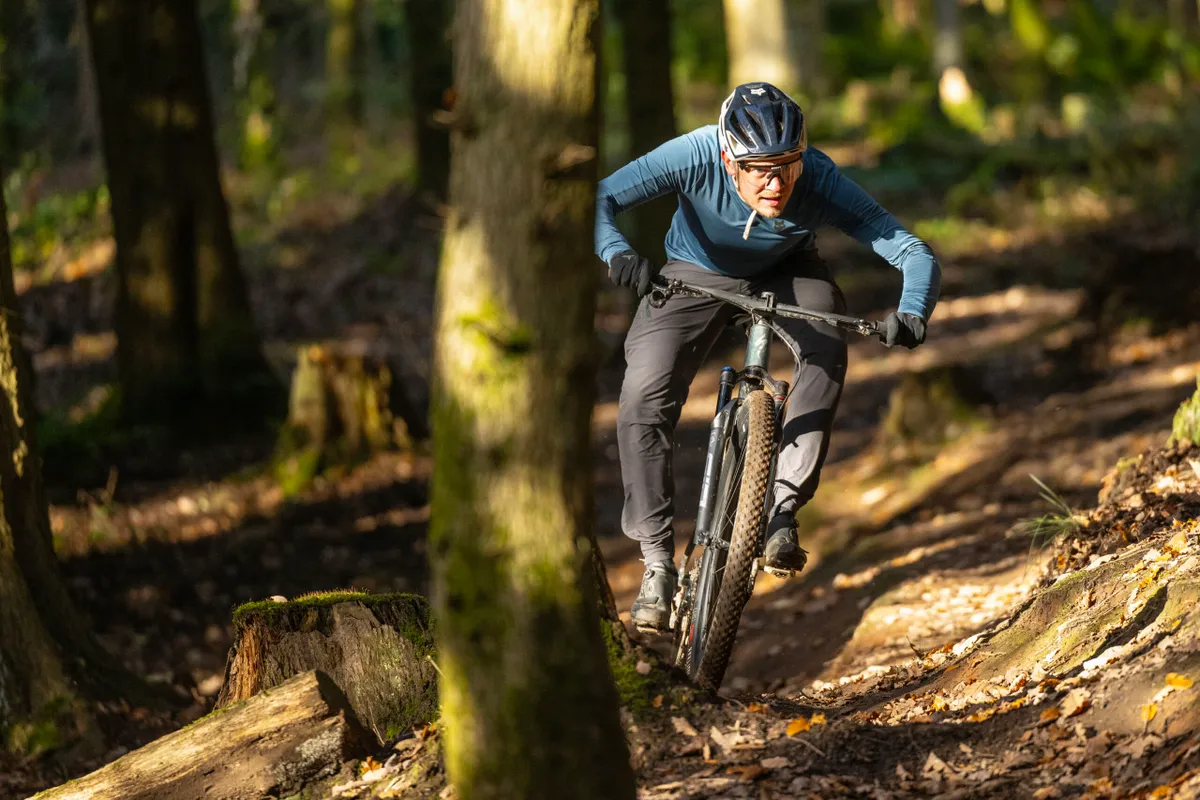
I tested the Epic World Cup in a host of conditions, and on a wide variety of trails.
My regular XC bike test loops include everything from rocky trail-centre laps to slithering round trees in the woods. I raced the bike, with a few modifications, at the Epic Cami de Cavalls, a three-day race on Menorca.
Specialized S-Works Epic World Cup setup

Though different from normal bikes, setting up the Epic World Cup's rear suspension isn't overly difficult. There's ample detail in Specialized's online guide, and the suggested pressures and damper settings proved on the money, in my experience.
It's not feasible to adjust the suspension’s mode on the trail, unless you're carrying a shock pump, so having a bit of knowledge of what you're going to experience on your ride should guide you to which of the suspension settings you're going to use.
The Brain on the fork also enables you to adjust the sensitivity of its impact platform. If I'd decided the most aggressive No Gulp setting was desirable at the back, I found the harder Brain settings balanced feel nicely, though I might run the fork softer than the shock by one click on the adjustment dial.
In the Full Gulp setting, I tended to leave the fork fully open, though it's worth noting that the fork's Brain dial – which controls how much force is required to get the fork to move – can be adjusted on the fly.
Specialized S-Works Epic World Cup climbing performance
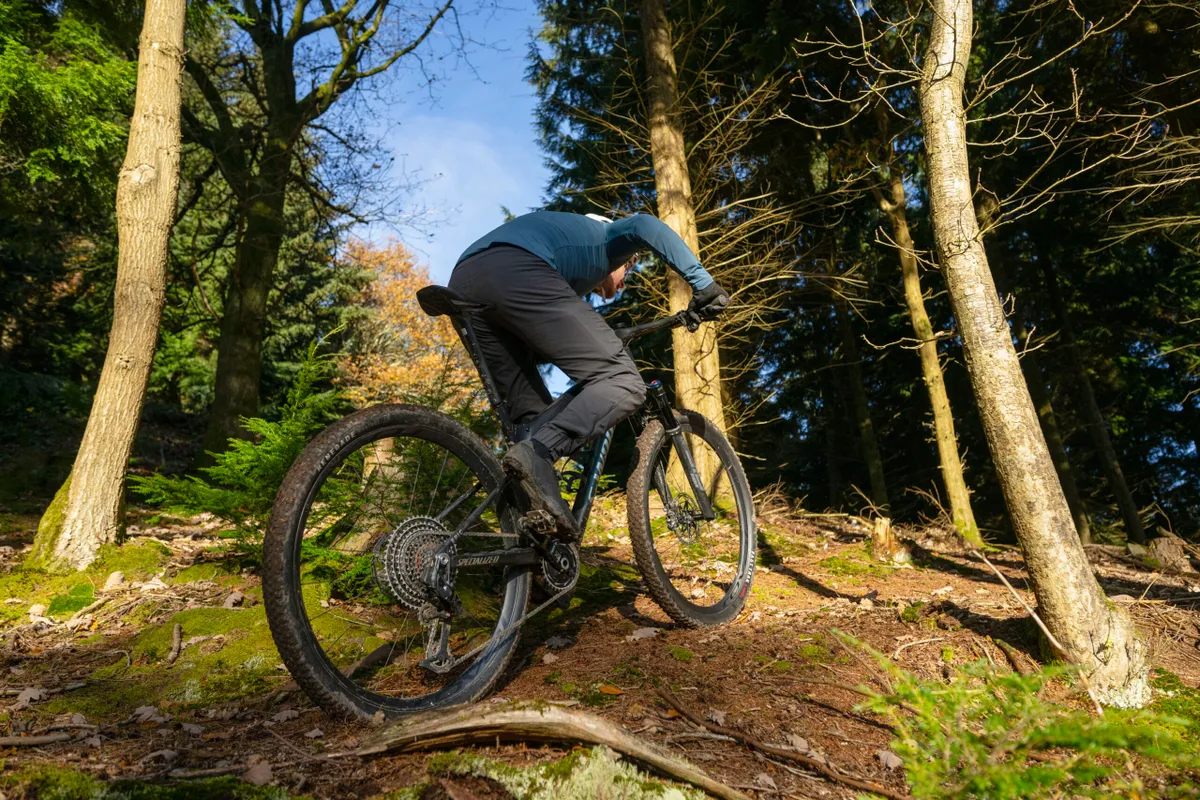
Climbing is traditionally the most important factor when it comes to cross-country bikes, and it is an area where Specialized has evidently spent a lot of its time with the new Epic World Cup.
The combination of the Renegade and Fast Track 2.35in tyres, and the Roval Contact SL wheelset, provided the bike with direct liveliness under acceleration, while offering good levels of grip on everything from wet rocks to gravel singletrack.
The 29mm internal rim width and the 2.35in tubeless tyres enabled me to run lower tyre pressures, though during the rocky marathon race, I decided to add a little back-up in the shape of a Huck Norris tyre insert.
The tyre sidewalls are supple, which helps the impressive traction levels.
Hard Gulp

The 75mm RockShock SID WCID shock provides the Epic World Cup with an excellent pedalling platform.
In the firm No Gulp setting, the shock has zero sag due to the negative air chamber being empty. Pedal bob is virtually eliminated in this setting, giving the bike the feeling and responsiveness of a hardtail.
Smash on the pedals and the shock will bob, but we're talking a couple of millimetres here, rather than anything that's going to sap any noticeable energy.
Specialized says the firm setting is best used on smooth terrain, and it provides the firmest and most snappy feel.
I found it very efficient when climbing, especially on fire roads, where the rigid feel of the bike turned pedal strokes into easy elevation gain.
Because a little persuasion is required to initiate the travel, it mimics a hardtail when on techier terrain too.
Scrabbly climbs can result in dirt being spat out of the back as the tyres struggle to dig in a touch, while the bike is marginally more prone to pinging about as you negotiate hill boulder fields.
At this point, you're relying on the tyre to provide the bulk of the bike's traction.
Soften it up
The Half Gulp setting gives the bike 4-6mm of sag, sitting between the zero sag and 10 per cent sag No Gulp and Full Gulp settings.
Dropping into this setup gives the bike noticeably more grip on technical climbs than when in No Gulp, because the suspension's breakaway force is lower than when you're in the firm setting.
This lets the frame soak up hard edges you come across.
However, the bike still feels pretty firm in this setting. There's minimal bob when you're pedalling and the rear wheel can still be left scrabbling a little on the loosest or slickest of surfaces.
I found the Full Gulp setting the best on more 'interesting' XC courses.
The 10 per cent sag doesn't leave the bike wallowing into its travel – you can stand on the pedals and give it beans without it feeling anywhere near sluggish.
At the same time, when the climb requires it, there's ample traction on offer. Because the bike doesn't sit deep into its travel, but still offers impressive levels of grip, the Epic World Cup is one of the best technical climbing XC bikes I've ridden.
As with the Brain system on the previous model, there is no complete lockout or remote setting of the bike. This set-and-forget system enabled me to think more about line choice before tackling uphill sections rather than button location.
Fork in the road
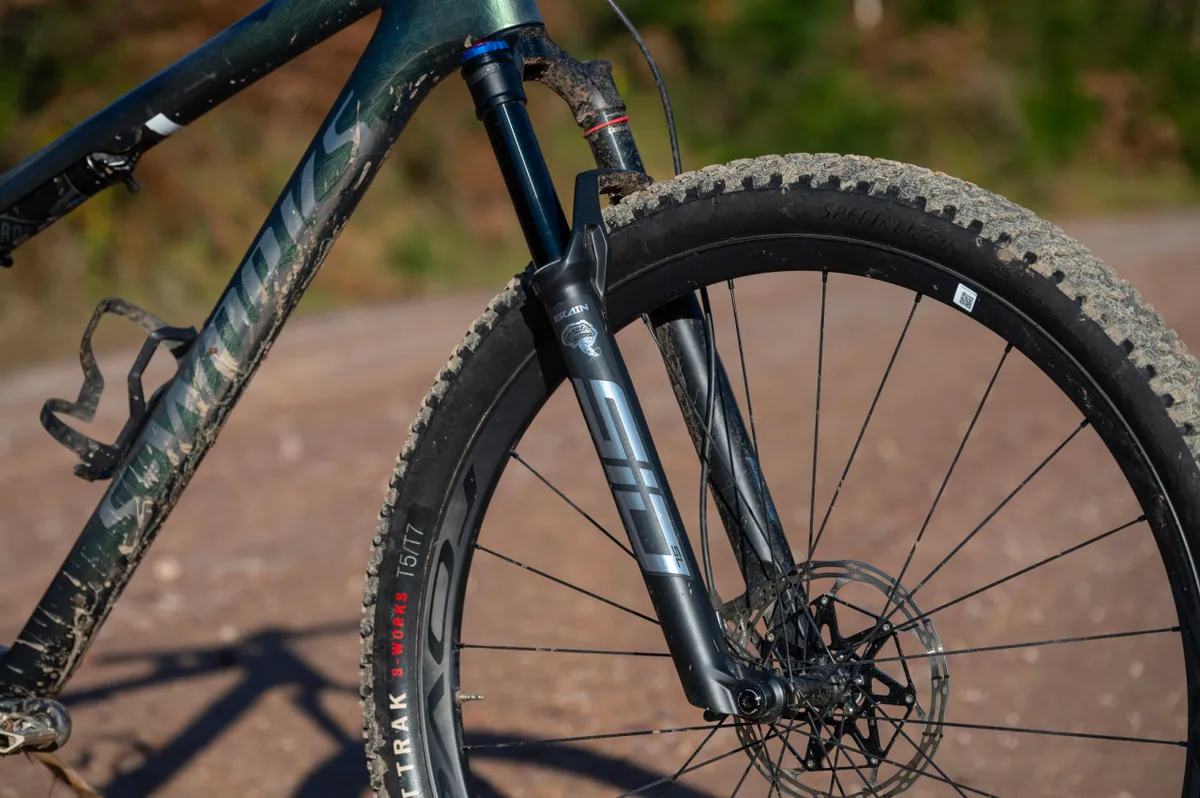
While the Brain may be dead on the rear shock, it lives on in the fork and provides good support for out-of-the-saddle efforts.
The fork sags into its travel, even when in the firmer settings.
The goal of the Brain is to separate body weight influences from impact forces, with increasing levels of resistance to movement.
In its most open setting, the fork reacts to virtually every bump in the ground, and will bob as you push and pull the bars a little.
Firm it up, and the tyres do more and more of the job of smoothing the way, while body weight has less impact on how much the fork moves.
The Brain has always been a divisive system, whether in the fork or the shock, but I like it. It perhaps doesn't feel as smooth as forks that have manual control of the lockout, but I'd rather spend my time concentrating on where I'm pointing the bike than fiddling about with levers.
The geometry of the bike is well suited to climbing, keeping your body weight nicely centred over the pedals.
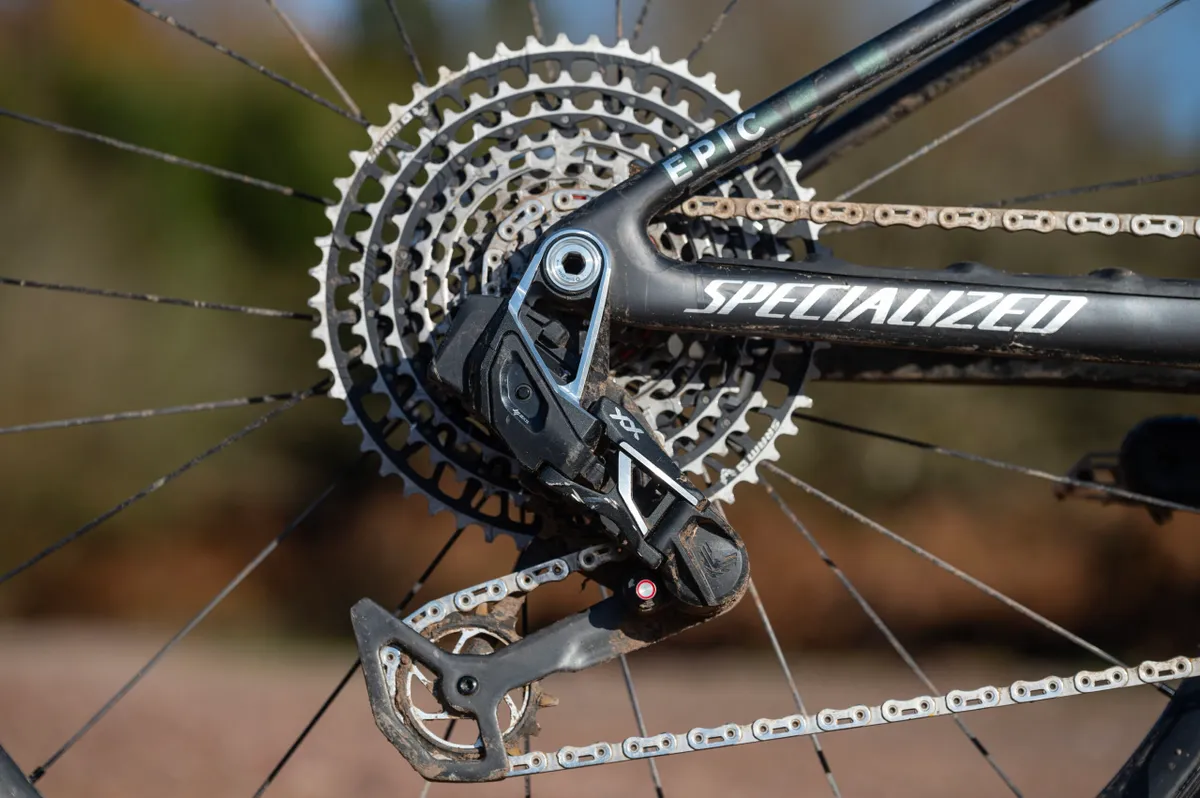
A long front end gives plenty of room to move about on the bike, enabling you to shift forward and back to find traction over obstacles. The seat angle might not be as steep as some, but with minimal sag, it stays pretty static and it's a comfortable place to be.
SRAM’s XX SL T-Type Eagle AXS performed well, enabling me to shift gears without lifting off the power. However, there is a delay between pressing the shift button and the derailleur shifting, to ensure all the shift ramps line up nicely to give that smooth shift. I find it a little irritating, but it's not the end of the world.
The little buttons on the AXS Transmission Pod shifter, though, fell off the bike easily.
The Stealth brakes also made holding the bars further inward feel more stable because my hands were placed more naturally over the levers. This made long fire-road climbs a little less taxing on my upper body.
Specialized S-Works Epic World Cup descending performance
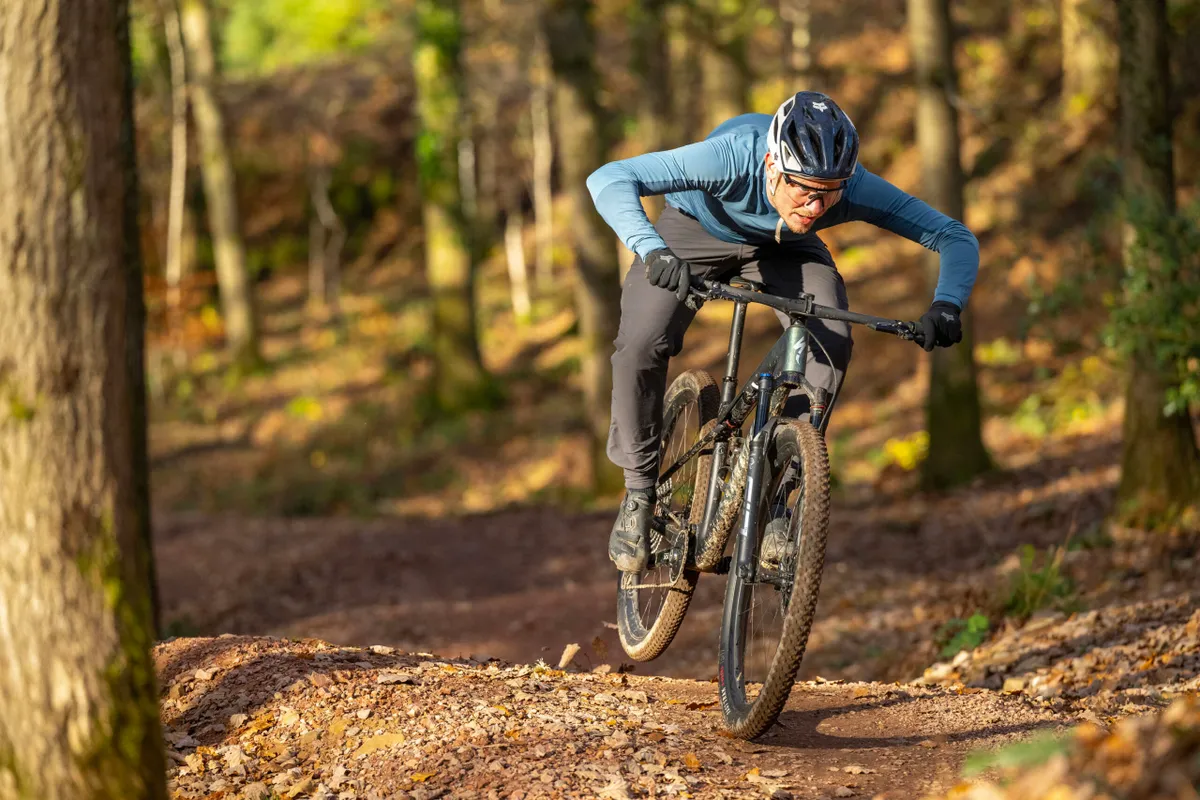
Descending on the Epic World Cup, with its 75mm of travel and unique attitude towards sag, feels different from most XC bikes, especially when you consider the current trend for 120mm bikes.
In its No Gulp mode, the suspension only really moves when you hit a medium-sized impact, and so it feels effectively rigid at the rear until you tackle an obstacle.
At this point, the shock releases its travel, leading to a 'trapdoor' kind of feel as the bike squashes into its 75mm of travel.
It's not unpredictable, as such, however it's quite a distinct feeling.
The suspension is here to take the sting out of the trail, rather than flatter your descending skills.
This means the general attitude is more skittery as the bike pings from rock to rock, especially when under braking.
At the same time, on smooth-rolling terrain, the Epic can pump and push through corners and rollers with buckets of speed.
It is noticeable, though, that the bike pitches forward on steeper tracks.
With the shock staying firm and the fork compressing, your weight is pushed forward as you descend, much like on a hardtail.
Ease into it
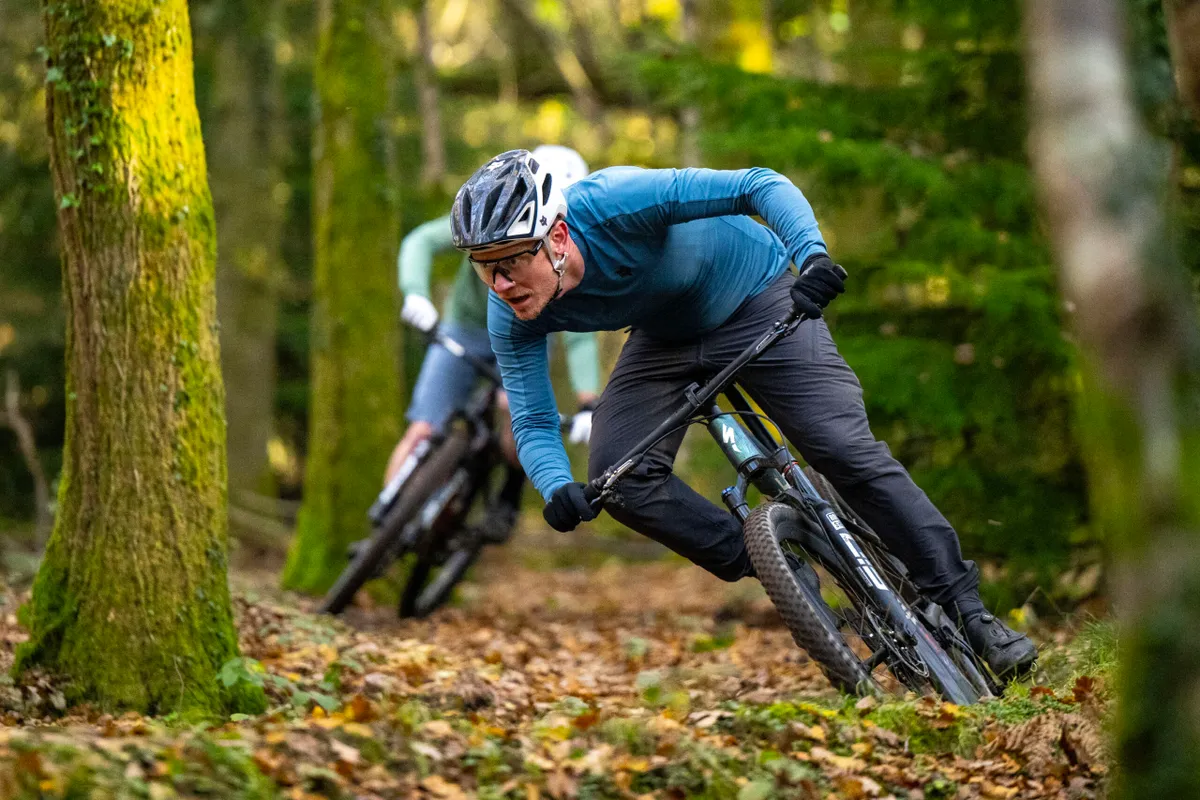
When you introduce more sag into the equation, things get calmer.
Dropping into some flat, loose corners after moving a bit of air into the shock's negative air chamber, the rear wheel instantly has more grip, as the back of the bike becomes more forgiving.
While the Epic World Cup can't compete with longer-travel rigs over rougher trails, the addition of 10 per cent sag makes a marked difference to how well the bike tracks the ground.
It's smoother, more controlled and easier to navigate over and around rocks and roots.
While travel numbers are limited, the Mega Jounce Bumper clearly does its job well.
Hitting trickier sections of trail at speed reveals the bike definitely gives you all of its travel, but when you're pushing the sag o-ring off the end of the shock's stanchion, you're not greeted with a metal-on-metal clunk, or a horribly harsh bottom-out.
The bike's moderately modern geometry encourages you to push it hard as you're descending.
I found myself hurling down blind trails as fast as I dared.
When it came to super-technical sections, where other racers were jumping off their bikes, I found the Epic World Cup happy to sit on the edge of a drop and boost down, or slither itself in a rocky catch berm ready for me to get off the brakes and look towards the exit.
Riding these technical trails does rely on a little more brain power than a 120mm race bike might, but don't be fooled into thinking the bike can't compete.
Top of the pack
The stiffness of the bike, bolstered by the little hidden link that drives the shock, adds confidence, enabling me to place it accurately on the trail even through a memorably gnarly rock garden.
Specialized has kept the chainstay lengths short at 430mm, with the bike feeling playful and eager to change direction, while the longer front centre makes it stable through steep corners and rugged sections.
While it might be a bit upright to play about on, especially with the rigid post that's fitted, the Epic World Cup is more than capable of handling the twists and turns of a race course.
The fairly slack head angle and generous reach complement each other, and work well with the moderately short stem.
Handling is snappy and accurate, while the longer front centre gives the bike a confidence when the trail is pointed down.
Finishing touches
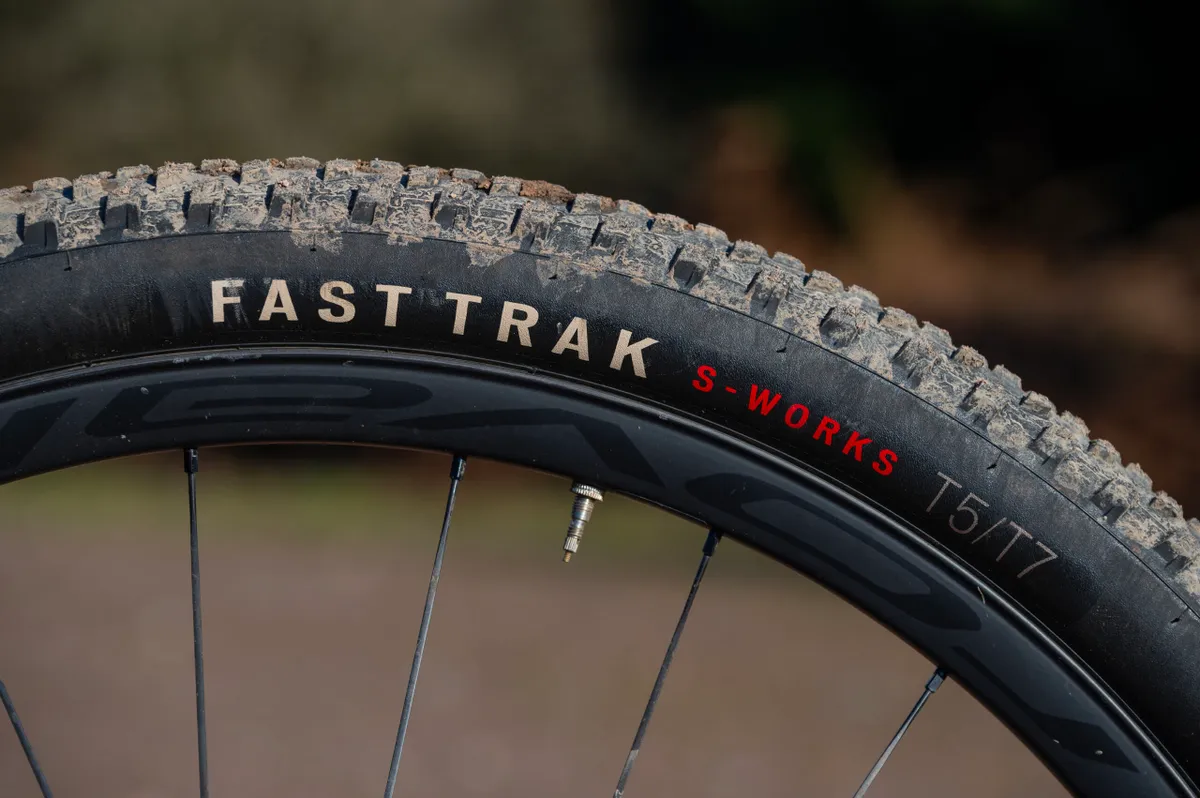
The chassis and wheels complement each other, having stiffness where needed without being unruly in the tech.
The tyres, despite some dodgy line choices, have remained inflated throughout.
The skinny tread rolls remarkably fast, and the rounded profile at either end makes leaning the bike over smooth and predictable.
They don't dig in and grip as well as a more aggressive tyre would, but their large volume aids comfort and I found myself trusting their tread more and more as I rode the bike.
The rims' flared side walls also boost confidence when rolling through rocks.
The broadening of the rim wall where it meets the tyres increases the surface area of any impact, reducing the forces and limiting the risk of pinch punctures.
The SID SL fork with the Brain damper is another aspect I feel Specialized has got right.
It works well on the climbs, but also performed admirably on the descents.
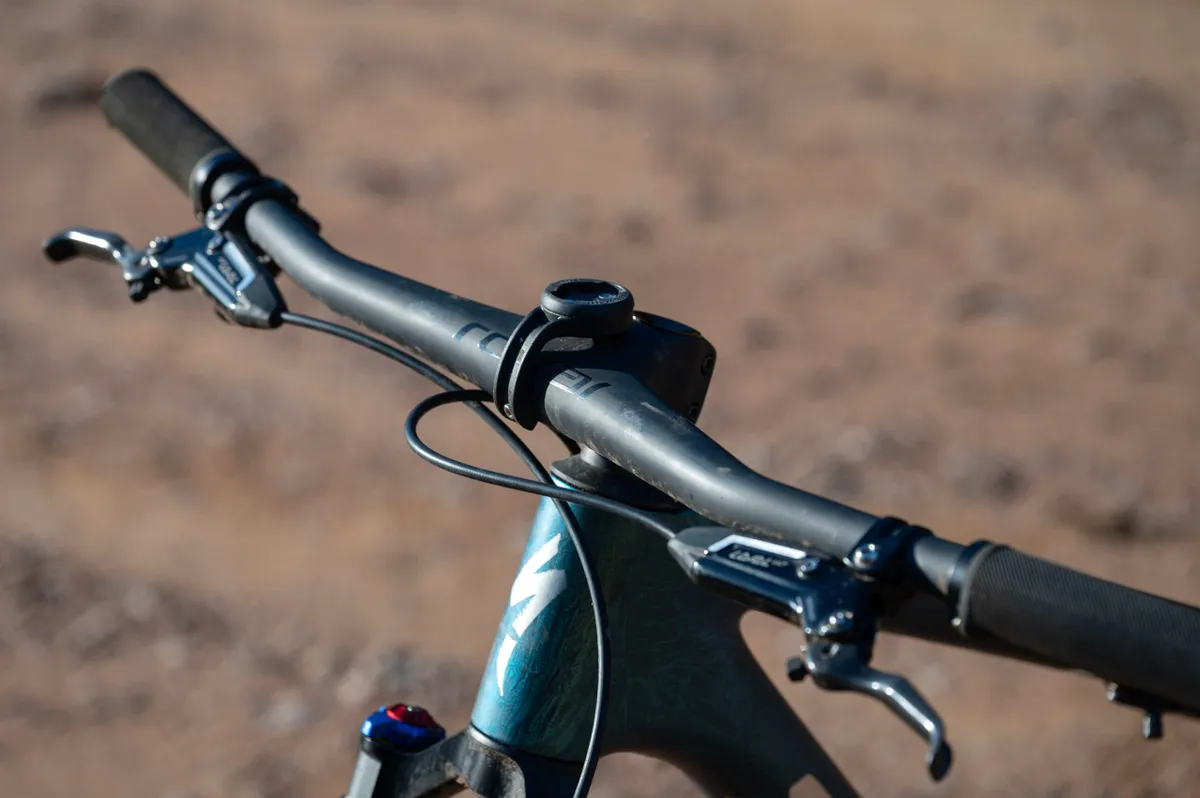
Unless you're running it in the firmer settings, the transition from closed to open is pretty smooth and largely unnoticeable on the trail.
When it's open, it works as well as I'd expect from the SID – it's smooth, supportive and comfortable. The 110mm of travel further boosts the bike's capabilities.
One aspect I didn't like was the combined bar and stem.
The cockpit is harsh, with little to no give through the bars, while the 8-degree backsweep isn't to my taste. I found even short rides resulted in pummeled palms and sore wrists, so I swapped it during testing for a two-piece setup.
A regular two-piece cockpit would be much preferred. However, you're fixed here with Specialized's bar engineer's preferences.
I'd forego a few grams to get some comfort for my hands.
Specialized S-Works Epic World Cup bottom line

While some XC bikes, especially those with longer travel figures, might blur the lines into downcountry or trail genres, the Epic World Cup is unapologetically XC race-focused.
The suspension takes a little getting used to, and in its firmer settings has that trap-door feeling that separates it in feeling from most XC bikes.
Open it up a little, though, and it starts to make more sense, blending the best bits of a hardtail with some of the (many) advantages of a full-suspension system. I'd wager that the bulk of (non World Cup) racers will prefer it with a little give out back.
It's also not a hugely versatile bike. It rewards full-gas efforts, pushing you to taste blood on every climb. Take it for a longer, cruiser ride, though, and the harsh cockpit and unforgiving suspension will leave you yearning for a more sympathetic rig.
So, who's it for?
While an XC bike can be a lot of fun as a do-it-all machine on less challenging terrain, the Epic World Cup feels as though it's reserved for the committed XC racer, who's looking for a reactive, punchy, no-holds barred race bike.
If I was going to enter an XC Olympic race tomorrow, I'd be pulling the Epic World Cup out of the garage, but otherwise, it'd probably remain locked to the ground anchor, waiting for its moment to shine.
Product
| Brand | specialized_bicycles |
| Price | 12500.00 EUR,12000.00 GBP,12000.00 USD |
| Weight | 1756.0000, GRAM (Medium) - (medium sized frameset, including shock) |
Features
| Fork | RockShox SID SL ULTIMATE BRAIN |
| br_chain | SRAM XX SL Eagle |
| br_frame | Specialized S-Works World Cup |
| Tyres | Specialized S-Works Fast Trak 29x2.35in (front), Specialized Renegade 29x2.35in (rear) |
| br_brakes | SRAM Level Ultimate Stealth |
| br_cranks | Quarq XX SL power meter crankset |
| br_saddle | Body Geometry S-Works Power |
| br_wheels | Roval Control SL |
| br_shifter | SRAM POD AXS |
| br_cassette | SRAM CS-1299 |
| br_seatpost | Roval Control SL carbon seatpost |
| br_gripsTape | Specialized Trail Grips |
| br_handlebar | Roval Control SL integrated cockpit |
| br_rearShock | RockShox-Specialized SIDLuxe WCID Ultimate |
| br_bottomBracket | SRAM DUB, BSA 73mm, Threaded |
| br_availableSizes | S, M, L, XL |
| br_rearDerailleur | SRAM XX SL Eagle Transmission |
